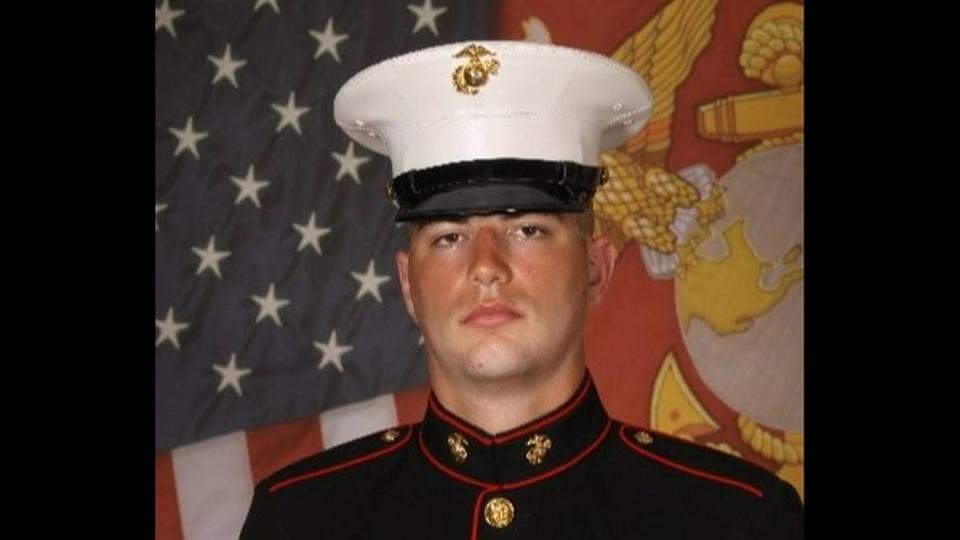Doctor: Recruit could have died anytime. ‘It just happened to happen during the Crucible’
A doctor testified Tuesday that Dalton Beals’ death during basic training at U.S. Marine Corps Recruit Depot Parris Island in 2021 resulted from a fatal and preexisting heart condition. Under cross examination, the prosecution strongly questioned the doctor’s testimony with the exchanges becoming testy at times.
Gerald Feigin, a New Jersey forensic pathologist, was called to testify in the defense of Staff Sgt. Steven Smiley, who is on trial for negligent homicide, dereliction of duty resulting in death, violation of the recruit training order, maltreatment of recruits and obstruction of justice in the June 4, 2021 death of 19-year-old Beals of New Jersey. Smiley has pleaded not guilty.

The prosecution rested its case Tuesday and defense counsel began with Feigin as their first witness.
Feigin testified that Beals’ manner of death was natural and the cause, cardiac arrhythmia brought on by heart disease.
Beals’ alleged heart condition contradicted the conclusion of Dr. Ellen Riemer of the Medical University of South Carolina, a cardio and pulmonary specialist who performed the first autopsy for Beaufort Memorial Hospital. Earlier in the trial, she testified — on behalf of the prosecution — that Beals died of hyperthermia, which is a dangerously overheated body.
“You don’t want to bad mouth another doctor, but I think in this case it’s justified,” Feigin said.
One by one, Feigin went through 134 slides of Beals’ heart that were shown on a big screen and pointed out areas to the six-man, two-women jury of what he described as scar tissue. Scar tissue, Feigin said, prevents electricity from moving through the heart, causing it, in effect, to short out.
“You shouldn’t have any scars in the heart,” Feigin said. “Period.”
The scarring of Beals’s heart was unusual for a 19-year-old and one of the worst he’d seen in his career, he said, with the scarring showing he had heart disease. How Beals lived as long has he did “with a heart that bad,” Feigin said, is a mystery. He described it as one of the worst he had seen in his career. With a heart like that, the only outward sign or symptom “is death,” Feigin said.
“It could have happened anytime,” Feigin said of Beals’ death. “It just happened to happen during the Crucible.”

Beals died during the Crucible, the final challenge recruits must meet before earning the title of U.S. Marine. It’s a 54-hour event that tests physical stamina, mental toughness and the ability to think critically while under stress including hunger, sleep deprivation and exhaustion.
Lt. Col. Ian Germain of the prosecution sharply questioned Feigin.
Did he know if anybody was near Dalton Beals when he died? Feigin wasn’t sure.
“You don’t want to know if someone saw Dalton Beals die?” Germain asked.
It would not have mattered, Feigin said. Beals’ death from severe cardiac issues was sudden and “one step below” a gunshot to the head, Germain testified. “The presenting sign is death,” Feigin said.
Germain rattled off questions.
Did Feigin ask for any information about Beals’ core body temperature? Did he ask for information about the conditions under which Beals died? Did he know Beals had fallen down and refused water? Did he know that Beals had attempted to hand canteens that were full of water to another recruit to fill up? Did he know he had left an area where Marines were staged in buddy pairs on his own?
Feigin replied “no” or that he had learned about details later from the defense.
Germain continued his questioning, asking about the progression of signs that Beals showed before he died and whether that was important to take into account in determining the cause of death? Some of the time, Feigin said.
“Is it important that you not be wrong here?” Germain said to Feigin at one point.
Feigin conducted the second autopsy at the request of Beals family but it’s the defense that called him to testify.
Germain also questioned whether there could be changes to the body, including scarring of the heart, after death. Feigin said he was confident the scarring did not occur after Beals died.
During the second day of the Crucible, about 90 minutes after Beals had completed one of the training events, which included a long hike, he was found unconscious on Page Field, a former airfield on the southeast corner of the depot. Efforts to revive him failed. He had been missing for an hour. The government charged Smiley, alleging he overworked the recruits in extreme heat and neglected to see the signs of Beat’s heat-related illness and rebuffed recruits who tried to bring it to his attention.
On Tuesday, Smiley’s defense asked Col. Adam J. Workman, the judge, to dismiss the charges, arguing the government had failed to prove them. Workman withheld judgment on that request.

 Yahoo Autos
Yahoo Autos 